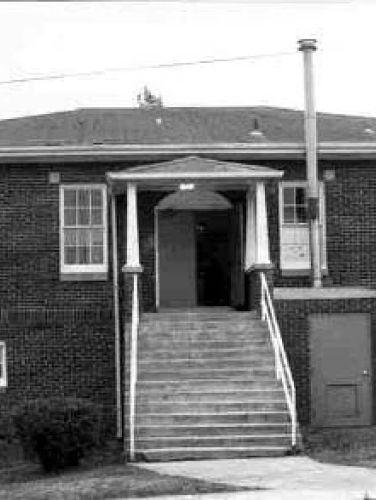
Long Creek Agricultural Building
(ca. 1938)
The Long Creek Agricultural Building housed Mecklenburg County’s 1930s efforts to modernize the local agricultural industry through secondary education.
9213 Beatties Ford Road, Huntersville, NC 28078
The 1938 construction of the Agriculture Education Building on what was then the campus of Long Creek High School was apparently funded by the Public Works Administration. The PWA was part of the National Industrial Recovery Administration, one of the New Deal agencies created by Franklin Delano Roosevelt during the first 100 days of his first presidential term to spur economic recovery. The “Ag” Building is one of the oldest extant buildings on that campus, from which Long Creek High School moved to the North Mecklenburg High School campus in 1951. It is pre-dated in terms of longevity only by the Boiler Room (1923) and the Gymnasium (1932). The "Ag" Building cost $11,000.00 to build.
Property Quick Links
Up until the high school’s 1951 move, classes in agriculture and shop were taught in the Ag Building by Orland Gabriel. Vocational and agricultural courses were introduced into the high school curriculum in the late 1920s. The students who took these courses were usually from rural families, many of whom operated farms. These classes were optional; however, the consistently high enrollment suggests that these courses were not merely popular but also necessary practical training as most early Mecklenburg County residents were engaged in agriculture as a livelihood.
Agricultural classes taught students about field crops and animal husbandry. Their education took advantage of the newest technology available to farmers, particularly in horticulture and farm machinery. The students learned which staple crops grew best in this region and what kind of mechanized equipment could help them farm more efficiently. They also learned about the breeding, growth, and feeding of livestock. Field trips served as a significant element of these courses, as the students frequently visited neighboring farms to assist farmers with dehorning cattle (to protect the farmer and his herd), docking sheep (shortening their tails for sanitary purposes), canonizing (neutering) chickens, and castrating cattle, swine, and sheep. No anesthetics were used on the animals for these procedures, as anesthesia was rendered only by veterinarians, but the animals seemed to recover within thirty minutes of these procedures. The students did have to catch the animals and tie them up to prevent escape and unintentional injury to both the animals and the students. The students also ran a cannery on the Long Creek campus as part of the curriculum for practical education and as a service to the surrounding community. Individuals who used the canning facilities at Long Creek High School paid a small fee to cover the expenses of cans and coal.
Shop classes taught students how to make such practical items as bookcases, corner cabinets, and kitchen cabinets, as well as larger community-oriented projects like calf shelters for dairy farmers and picnic tables. Most of the instruction in shop revolved around wood working, but the students learned metal work and welding as well. The overall curriculum emphasized self-sufficiency and sought to provide a practical education about agriculture and home manufacture for young men in agricultural communities likely to inherit and work the family farm.
Agricultural education was offered in Mecklenburg County through the late 1970s. Although no longer used for vocational or agricultural classes, the Long Creek Ag Building has remained in continuous use, furthering the educational mission of the school for several generations.

